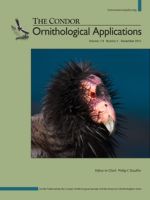Edges, including roads, can have unintended deleterious impacts on wildlife. However, roads also present opportunities for replicable, and spatially and temporally consistent, wildlife monitoring. Assessing sources of variability associated with roadside-based surveys could improve the accuracy and extend the inferences of surveys, thus strengthening their applicability to management. We assessed roadside effects on abundance (λ) and detection probability (p) of high-priority grassland and shrubland songbirds in western Kentucky and Tennessee, USA. We delineated transects 300 m apart perpendicular to secondary roads and, along each transect, positioned point counts at 0 m, 300 m, and 600 m off the road. We surveyed 8 species: Northern Bobwhite (Colinus virginianus), Bell's Vireo (Vireo bellii), Prairie Warbler (Setophaga discolor), Field Sparrow (Spizella pusilla), Grasshopper Sparrow (Ammodramus savannarum), Henslow's Sparrow (Ammodramus henslowii), Dickcissel (Spiza americana), and Eastern Meadowlark (Sturnella magna). We used Royle N-Mixture models to estimate species-specific abundance and detection probability. For abundance, distance from the road affected only Henslow's Sparrow; mean Henslow's Sparrow abundance increased by 59% at points 600 m away from a road. For detection probability, distance from the road was not important for any species, suggesting that noise or activity associated with low-traffic roads did not affect bird singing behavior or observer hearing ability enough to affect survey results. Abundance was more strongly related to land-cover covariates than distance from the road. With the exception of Henslow's Sparrow, roadside surveys for 8 high-priority grassland bird species produced estimates of abundance and detection probabilities representative of the broader landscape. Roads can provide opportunities to accurately monitor occupancy, abundance, and density of grassland birds using surveys that account for land-cover variation and seasonal variation in detection probability.
How to translate text using browser tools
28 September 2016
Minimal bias in surveys of grassland birds from roadsides
Christopher M. Lituma,
David A. Buehler
ACCESS THE FULL ARTICLE

The Condor
Vol. 118 • No. 4
November 2016
Vol. 118 • No. 4
November 2016
abundance
convenience sampling
detection probability
grassland birds
roadside effects




